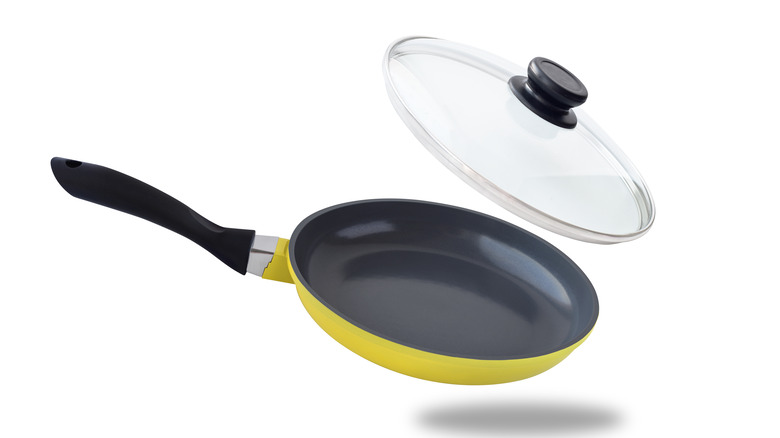Why Laura Vitale Thinks Every New Cook Should Own A Nonstick Pan
Naples-born, New Jersey-based chef Laura Vitale has crafted quite the name for herself thanks to her YouTube channel Laura in the Kitchen, which has a staggering 3.83 million subscribers. She shares recipes for everything, from Italian classics like homemade pesto pasta to international dishes such as Japanese pancakes and chilaquiles verdes. Given that she's in the kitchen so often — as she told the New York Post, "I cook from the time the sun goes up to the time it goes down" — it makes sense that she'd have some strong opinions on the types of kitchen tools and gadgets that are worth your money, and the ones you should just ignore. The top of Vitale's must-have list includes a common kitchen staple — a nonstick pan.
Many chefs favor materials like stainless steel or cast iron for their pans, as New York Magazine reports. However, as Vitale tells the Post, a nonstick pan or skillet is ideal for new cooks because materials like stainless steel can be intimidating. With a nonstick pan or skillet, you don't have to worry about a lot of the maintenance or usage considerations that come into play with other pans. Vitale also recommends avoiding pans that have a rubber handle, for increased versatility — a pan without a rubber handle can be placed in the oven, allowing for seamless transition from searing to roasting or broiling.
A few more tips for buying the right nonstick pan
So, you've decided to follow Vitale's suggestion and invest in a nonstick pan for your kitchen. However, a quick search of any website or store that sells kitchenware will show you that there are a ton of options on the market, and it can be hard to make your selection.
As Taste of Home notes, the first thing to consider is the type of coating used on the pan. Teflon and ceramic are the two most commonly used nonstick coatings; both are favored for different reasons and are quite durable and user-friendly. You also want to check that the pan is made from at least 5-ply metal cladding, as Everyday Dishes suggests, to ensure your pan heats evenly.
Finally, look at the different functions the pan offers. As Vitale suggests, you want something that can be placed in the oven (and if so, you'll want to make sure it actually fits in your oven, if you're buying a larger-sized pan). You also want to see whether it can be placed in the dishwasher or not — many can't, which may be something to think about for cooks who want easy cleanup and as little maintenance as possible. Finally, consider what type of stovetop you have — for example, aluminum-based pans, which are quite common in the nonstick pan world, can't be used on induction burners.

